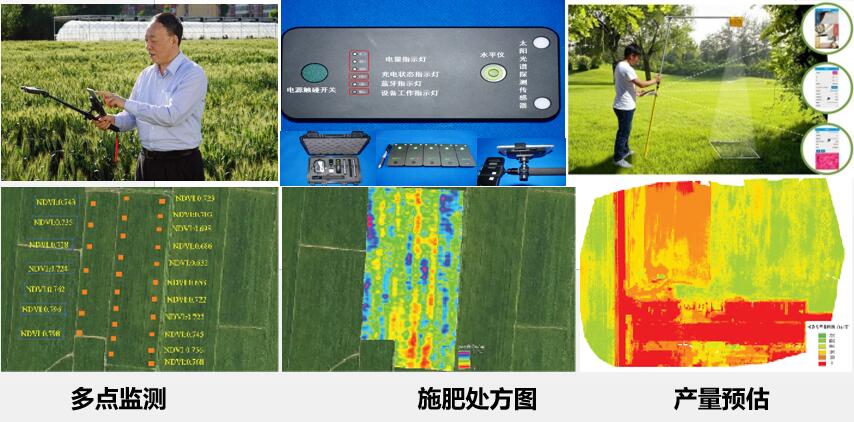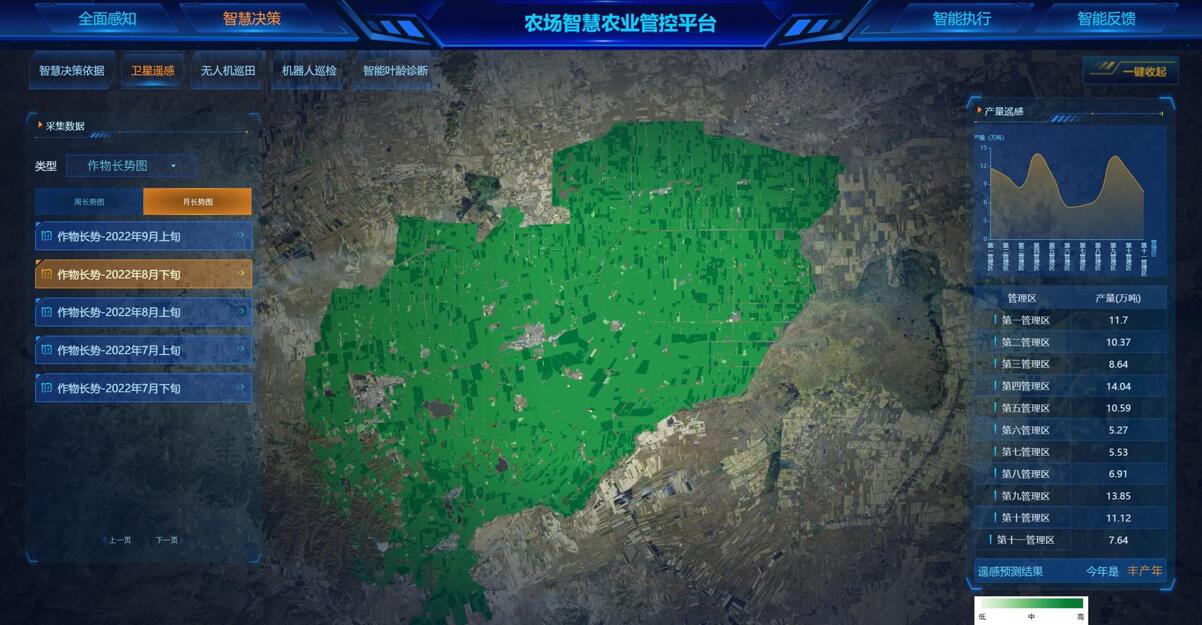
Paddy field of Xiaozhan Rice in north China's Tianjin Municipality. /Agriculture and Rural Affairs Committee of Tianjin Municipality
Paddy field of Xiaozhan Rice in north China's Tianjin Municipality. /Agriculture and Rural Affairs Committee of Tianjin Municipality
With the help of smart farming, the traditional rice brand, Xiaozhan Rice, in north China's Tianjin has revived in recent years.
Researchers have explored ways to integrate multiple devices into one platform to help farmers monitor crop growth and make decisions, according to Xu Xingang, principal researcher of a smart farming project and researcher from the National Engineering Research Center for Information Technology in Agriculture (NERCITA).
"We use satellites, unmanned aerial vehicle (UAV) and portable devices to help with this," Xu told CGTN. "A single development of one device is not rare, it is hard to combine multi-devices into one to serve farmers with the lowest cost and the best effectiveness."
Xu said that with the help of China's Gaofen satellites, remote sensing images with high spatial and temporal resolution have made it possible to monitor the process of crop growth.

Maps of Xiaozhan Rice derived from the Gaofen satellite images from 2019 to 2021. /NERCITA
Maps of Xiaozhan Rice derived from the Gaofen satellite images from 2019 to 2021. /NERCITA
Flying in the sky, the UAVs helps monitor and assess seedling condition, nutrition status and lodging in rice. "Equipped with high-resolution multispectral cameras and laser radar, the UAV-based technology can help save 5 to 12 percent nitrogen fertilizers," said Xu.
Xu said his team has also developed a portable instrument to help with monitoring for smaller farms. Key crop growth indicators, such as leaf area index, fractional vegetation cover and chlorophyll content, can be measured with the device. It can help recommend the amount of nitrogen fertilizer and predict yield to farmers, Xu said.

The portable instrument for monitoring crop health (the upper three images), its working mode, a prescription map for fertilization and a map to forecast yield (the lower three images). /NERCITA
The portable instrument for monitoring crop health (the upper three images), its working mode, a prescription map for fertilization and a map to forecast yield (the lower three images). /NERCITA
Using these technologies, two demonstration farms have been established, with a total of 5500 mu (around 367 hectares). They have also offered technical training to 150 personnel to better serve farmers.

Big data-driven dynamic monitoring system for smart farming. /NERCITA
Big data-driven dynamic monitoring system for smart farming. /NERCITA
Traditional rice brand get 'rejuvenated'
Xiaozhan Rice is an old brand. The rice originated from Xiaozhan Town in Jinnan District, Tianjin. The town had been a place of strategic importance and an army was stationed there in the late Qing Dynasty (1644-1911).
The troop training in the town made the place famous and it was the only Chinese town marked on maps published in Europe and the United States in the late 19th century. It created the country's first new-style army based on a modern military system, with soldiers equipped with modern weapons and equipment, according to a report by Xinhua News Agency.
Xiaozhan Rice was bred based on the original rice and other high-quality rice genes with the rise of troop training in the town. Nowadays, the breeding of Xiaozhan Rice uses a combination of traditional agricultural techniques and new technologies.
Since 2018, Tianjin launched a campaign with methods including exploring digital technology into the planting and injecting funds into rice planting.
In addition, efforts were made to new rice breeds. Several high-yield, high-quality varieties have been cultivated, such as Jinyuan U99, Jindao 919 and Jinchuan No.1, which were marked by features like resilience to diseases and pests, drought and salinization.

Xiaozhan Rice in in north China's Tianjin Municipality. /Agriculture and Rural Affairs Committee of Tianjin Municipality
Xiaozhan Rice in in north China's Tianjin Municipality. /Agriculture and Rural Affairs Committee of Tianjin Municipality
Farmers have also used their rice fields to breed crabs, shrimp and fish, with the crabs fertilizing the paddy soil and larvae in the field providing green feed for crabs.
At present, the planting area of the rice has grown from over 300,000 mu (20,000 hectares) in 2016 to more than 1 million mu (around 66,700 hectares) for two consecutive years, according to the Agriculture and Rural Affairs Committee of Tianjin Municipality.
"We've established 100,000 mu (6,670 hectares) standardized demonstration areas for rice seedling raising and cultivation till now," said Wang Haiyuan, an official at the committee's Planting Administration Office.
"Using standardized production technology, the yield per mu of the rice increased by more than 10 percent, the amount of nitrogen fertilizer reduced by more than 20 percent, and the amount of pesticide reduced by more than 30 percent," Wang told CGTN.